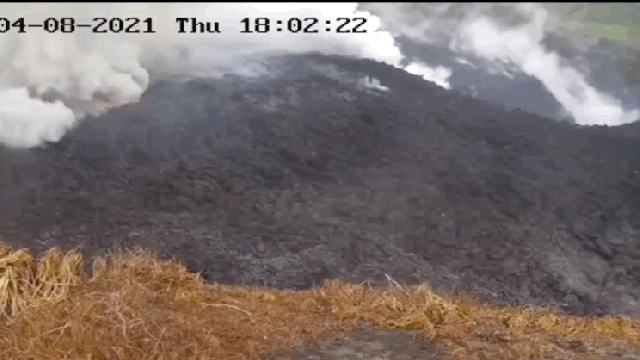On Friday, the small Caribbean island of St. Vincent became the epicentre of the seismic world when La Soufriere volcano sent a cloud of ash flying 6,096 metres into the sky and streaming across the Atlantic.
The volcano has been rumbling for months, but authorities raised alert levels to red in the northern tier of the island on Thursday after tremors began to indicate a new phase could be beginning. Swarms of earthquakes racked the volcano throughout the day, and the dome sitting at the top of the volcano “increased significantly” in height, according to the National Emergency Management Organisation for St. Vincent and the Grenadines (NEMO SVG). Those are all telltale warning signs that were confirmed on Friday morning with NEMO SVG tweeting, “explosive eruption confirmed.”
Webcam footage showed a towering column of ash over the volcano as residents in the red zone were urged to evacuate immediately. NEMO SVG said ashfall was reported 16.1 kilometres to the southeast at Argyle International Airport, the main aviation centre for the island nation of St. Vincent and the Grenadines. The airport is technically in the island’s green zone, though clearly impacts are still being felt. Prevailing winds have also steered a massive plume of ash east across the open waters of the Atlantic. Satellites caught the explosion as well as the ash plume, showing the magnitude of the event.
Prime Minister Ralph Gonsalves gave a tearful press conference on Friday, saying that the government would “continue to work” to keep all residents safe. Officials also warned that Friday’s eruption might not be the last — or even the biggest.
“The ash column is starting fall back down around the volcano,” Erouscilla Joseph, director of the Seismic Research Centre at the University of the West Indies, told The Washington Post. “It is possible that there will be some property damage. This could go on for days, weeks, or even months.”
Even before Friday’s blow-up, evacuations were ongoing. Royal Caribbean and Carnival both announced they were sending cruise ships to help. Carnival said they would take precautions to help ensure enough distance for evacuees, which will be a challenge on ships that have proved to be Petri dishes for the coronavirus over the past year. While getting people out of harm’s way of a dangerous volcanic eruption is obviously a top priority, the event really crystallises the danger of what’s been dubbed a “vaccine apartheid” where wealthy countries are outpacing less well-off ones in terms of vaccine access and distribution.
That said, the Post reports that Gonsalves has mandated vaccinations for cruise ship evacuees, and he was “strongly recommending” that anyone going to emergency facilities also get the shot. Relying on a natural disaster to up vaccination rates isn’t exactly normal protocol, but then 2021 has been anything but by the books so far.
The last major eruption was almost 42 years ago to the day from the current one. On April 13, 1979, the volcano sent plumes of ash rocketing into the sky and eventually ended in a burbling lava extrusion that created the bulging dome at the top of the volcano that portended the current eruptive episode. While there was no loss of life, a headline from 1979 dug up by the European Geophysical Union noted, “volcano in that destructive mood.” Hopefully, the current eruption doesn’t result in loss of life either.
